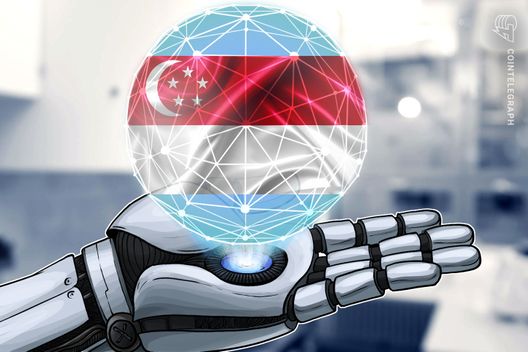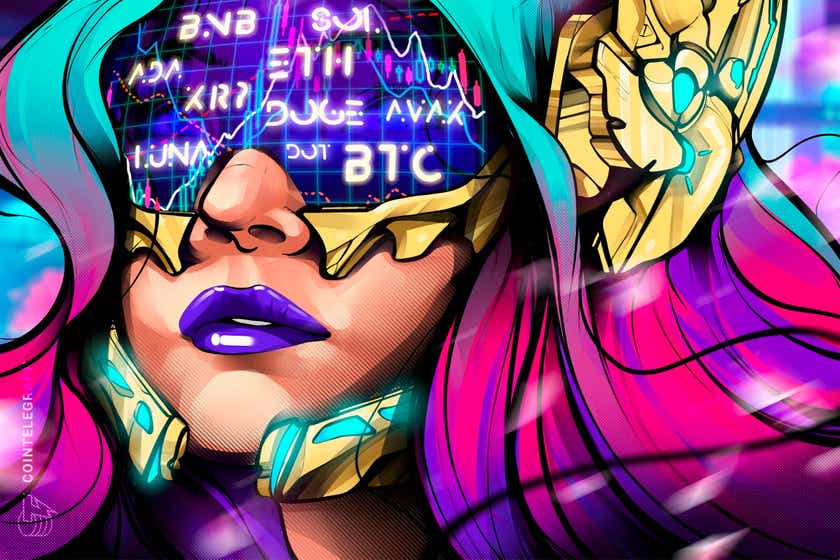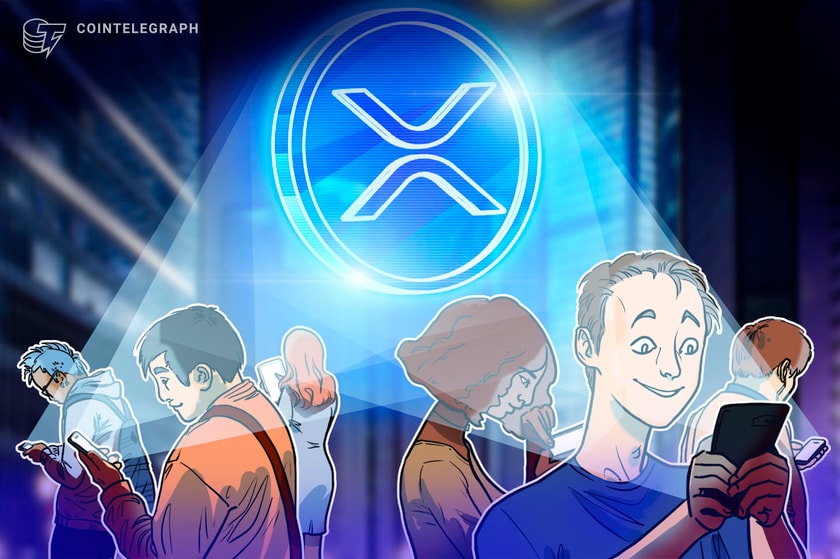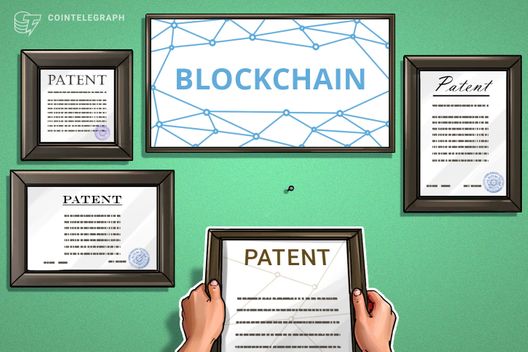Central Banks — A Bad Influence on Decentralized Finance
Philip Coggan, a British business journalist and news correspondent who writes for The Economist, once mentioned, “Modern money is debt and debt is money.” Few would disagree with this claim. Yes, the vast majority of money circulating today — so-called broad money — represents a specific type of credit–debt relationship.
This relationship is at the heart of today’s sovereign monetary authorities, the central banks under which almost all economic activity takes place. But the modern economic reality we have internalized is a breeding ground of confusion for innovators in the decentralized finance and broader crypto communities because it combines the roles of government and money implicitly.
Left unexamined, this duality can be misleading for anyone trying to understand the design of independent monetary systems. And it is a mistake to view the modern central banking framework as a starting point for how to think about monetary blockchain protocols.
The case I make below is simply that it is far more sensible to expand the function of base monies in the spirit of Bitcoin (BTC) than to “decentralize” central banks in the spirit of MakerDAO.
Factoring out government mandates
More than half of a century ago, Harford Montgomery Hyde wrote in his book John Law: The History of an Honest Adventurer:
“Someone mentioned the philosopher’s stone. To the surprise of all present, John Law said he had discovered it. ‘I can tell you my secret,’ said the financier. ‘It is to make gold out of paper.’”
The debt instruments we see circulating as functional money today are the most effective monies ever created. But the true secret of Law’s paper is that it’s produced by banking systems with sovereign authority and therefore inherits sovereign responsibilities. For example, the United States Federal Reserve has the following stated mandates: maximize employment, maintain stable prices and uphold moderate long-term interest rates.
This means people who are upset with losing their jobs, rapid price increases and expensive debt can assign some measure of blame to the agents behind modern money.
Ultimately the central banking system we know and love is a flexible, discretionary instrument through which policymakers can support a body of people governed by a body of laws.
Think of the central banking system as a “god mode” interface built for smart, well-meaning decisionmakers. And think of the Fed mandates as “reminder notes” pinned on the terminal.
We should be grateful this system exists, moreover that it’s flexible and powerful enough for administrators to triage the economy though serious shocks like the one we’re currently experiencing.
But my point is, none of the mechanisms made for this almighty administrator, nor its mandates, should be carried over to the design of independent monies without consideration.
An independent money has no people for whom to maximize employment. Therefore it cannot fear getting carried away with low interest rates, nor can it fear price inflation incurred in the process of keeping employment rates up.
Perhaps such an independent system should not require a “god mode” interface at all. But before we get ahead of ourselves, let’s first consider what the mandate of independent money actually is.
The mandate of independent money
In August 2018, The Economist started an article titled “Was John Maynard Keynes a Liberal?” with the following statement:
“In 1944, Friedrich Hayek received a letter from a guest of the Claridge Hotel in Atlantic City, New Jersey. It congratulated the Austria-born economist on his ‘grand’ book The Road to Serfdom, which argued that economic planning posed an insidious threat to freedom. ‘Morally and philosophically, I find myself,’ the letter said, ‘in a deeply moved agreement.’ Hayek’s correspondent was John Maynard Keynes, who was on his way to the Bretton Woods conference in New Hampshire where he would help plan the post-war economic order.”
After the end of Bretton Woods, in a paper titled “The Denationalization of Money,” Friedrich Hayek went on to suggest that governments should allow the private issuance of money, such that individuals can choose to use whichever money they want.
Choice would lead to competition, he argued, placing a healthy pressure on central planners. It would force them to be judicious about their issuance of money, preventing things like hyperinflation and prolonged malinvestment from ever occurring.
Yesterday, a check against inflation
Having witnessed the effects of extreme inflation after World War I in Europe — notably Germany, where its desolation ushered in the rise of Hitler — Hayek remained vigilant against inflation throughout his career and was keen to highlight it.
But that was a different era.
And for all the money the U.S. central banking system has injected in the past two decades, we haven’t seen much price inflation. The excess money instead has turned into increased leveraged speculation. In other words, upon receiving a great sum of money, rather than consuming more we’ve tended to invest more.
Today, a check against larger boom-and-bust cycles
As the rate of growth in emerging market economies outpaces the growth of the U.S., foreign economy demand for safe dollar-denominated assets has outstripped growth in supply. This asymmetry between supply and demand allows the U.S. to rely on easy credit in normal times and extremely expansionary macroeconomic policies in times of crisis.
This seems great; being a reserve currency is an exorbitant privilege. But it is also an exorbitant burden. The problem is that neither countries in surplus nor those in deficit are incentivized to adjust their behaviors.
We can’t stop supplying the global economy with dollars even if it hurts us, and the global economy can’t stop demanding them. This conflict of interests is known as Robert Triffin’s dilemma, and it is believed that from this dilemma we’ve seen excessive U.S. indebtedness and risks magnified to disastrous proportions.
The historically increasing demand for dollar-denominated safe assets has encouraged the U.S. to issue more and more short-run assets, leading to leveraged risk-taking and magnified boom–bust cycles. Now, alarmingly, the global economy is so interconnected that these business cycles govern all traditional assets, affecting returns on labor and capital alike. In other words, we have no choice but to be repeatedly dislocated by a cycle that even authorities “in control” cannot escape.
The MakerDAO way
Back in the 1990s, James Carville, who served as a political adviser during the Bill Clinton presidency, said:
“I used to think that if there was reincarnation, I wanted to come back as the president or the pope or as a .400 baseball hitter. But now I would like to come back as the bond market. You can intimidate everybody.”
Broadly, the MakerDAO protocol seeks to decentralize a debt-based system of money and promises a stable currency — in the spirit of central banking. Except in this system, policy decisions around fee rates and collateral composition are made not at the discretion of a sovereign authority, but at the discretion of a community.
If this sounds great to you, rest assured you’re not alone. But it should be made clear that this approach preys recklessly upon misunderstandings about what makes central banking work and why.
Depends on an ancillary market of rational actors to regulate supply
Debt has inherent risk because it requires a speculator to accurately anticipate whether a person can pay it back with justifiable interest, or it requires a speculator to accurately forecast the future value of a collateral asset.
Rather than increasing or decreasing the supply of its monetary token Dai in response to demand, the MakerDAO system utilizes a separate marketplace with its own dynamics to incentivize users to borrow more or less Dai against the collateral they deposit.
Has no authority to deliver on the promise of stability
Systems of this nature are flawed when disconnected from sovereign authority in general because such free market systems operate by choice and incentive. Participants cannot be forced to take on credit or debt for the good of a network, nor can they be forced to stop taking on credit or debt for the good of a network. They can only be given incentives, such as lower or higher interest rates, to directionally guide actions.
A problem arises, eventually, when market incentives become insufficient. We’ve seen this happen repeatedly in repurchase agreement and bond markets, and these are some of the safest instruments out there.
However sweet a deal the Venezuelan bond market is offering, you may simply not want to receive any future payments in Venezuelan currency, and you cannot be forced to buy the bonds for the good of the country.
Similarly in the case of MakerDAO, however badly the system needs more Dai to function, you may simply not want to borrow against Ether (ETH) to supply it, and you cannot be forced to do so for the good of the network. All open debt marketplaces eventually face liquidity crunches requiring bailouts, even ones run by sovereign authorities.
So, unless the administrators of a debt-based money system can print bailout money and ensure the new money has predictable value through legal, political and economic leverage, the system is at the mercy of external lenders. Think of independent systems like this as “god mode” interfaces lacking a god.
Fulfills no mandate
Recall that Hayek’s recommendation was for authorities to allow the independent issuance of money. Failing this, an independent system would need to be uncensorable to achieve the desired effect. Systems prone to requiring bailouts, such as MakerDAO, are either unreliable or continue to exist only at the discretion of central planners.
They work, until it matters.
Keeping in mind that we already have an effective centralized system with the necessary authority to bail others out in times of need, it is unclear what purpose there is for things like MakerDAO.
They cannot provide customers with meaningfully new choices, let alone keep things like inflation or malinvestment cycles in check. What about providing access to banking services for the unbanked, you ask?
Offering access is much like providing choice. An unbanked user simply goes from having zero banking services to the choice of one or more banking services. In turn, this would place pressure on local governments to offer regulated alternatives of greater value or cede the infrastructure to external parties.
Similarly, if providing access requires explicit approval, then it is dependent — not independent — and doesn’t require decentralized infrastructure at all.
The Bitcoin way
Broadly, the Bitcoin protocol expands the function of commodity monies like gold and silver, making its system of money digitally transactable. Unlike a bank, Bitcoin has no balance sheet and possesses no notion of credit or debt. In other words, the protocol maintains only what users own, not what is owed to them or what they owe to others.
It promises only scarcity and censorship resistance. As a result, Bitcoin cannot be bailed out, cannot bail others out and requires virtually no supervision. Like other commodity monies, Bitcoin does not have a “god mode” interface. It simply exists and is difficult to censor or modify.
Fulfills mandates of independent money
Even without challenging the use of centralized currencies as a medium of exchange, which it is poorly suited to do, Bitcoin functions as a check against inflation and malinvestment. Moreover, its lack of consumptive utility distances it from traditional business cycles.
By comparison, commodities like oil can be used to store value but are easily distorted by forces like the demand for travel, which is directly affected by the very business cycles independent money seeks to escape.
Not a safe haven, not a problem
At present, Bitcoin is a risky asset relative to the dollar. Thus, it would be unwise to retreat into it during times of panic unless other available assets are on even riskier ground.
This neither invalidates Bitcoin’s function as a check against inflation nor does it invalidate Bitcoin’s function as a check against malinvestment cycles.
To show this, we can simply imagine an economic recovery — the product of a malinvestment bust — that is languishing on. Let’s also imagine that interest rates are low and consumption is low.
In this scenario, upon receiving a great sum of money, rather than consuming more we are tending to save more. Holding dollars guarantees losses to inflation, but consumption is down, which limits the rate of return on stocks and commodities.
In this case, among many others, Bitcoin provides optionality because its growth rate is easier to disconnect from things like output and consumption. It adds diversity to the ecosystem as a risk asset.
The path forward
“In the longer run and for wide-reaching issues, more creative solutions tend to come from imaginative interdisciplinary collaboration,” as Robert J. Shiller said.
Throughout this post, I’ve tried to show that we are truly not starting from scratch. Existing systems, such as central banking, operate effectively in some manners and ineffectively in others for a variety of reasons.
When borrowing from existing solutions, we ought to first understand the problems they were meant to solve so that we can avoid the immense cost of inheriting assumptions that simply do not apply.
It is straightforward to say that it’s neither plausible nor beneficial to recreate the debt money of sovereign issuers in a decentralized context at this time. However, it does make good sense to expand the function of commodity monies like gold in the spirit of Bitcoin.
Given that Bitcoin already exists, how might we continue expanding the function of such monies?
We would begin by limiting our toolkit to that of scarcity and censorship resistance. We would then investigate how to increase the diversity of monies, not merely the number of monies. And we would seek to overcome the known limitations of a fixed supply.
The views, thoughts and opinions expressed here are the author’s alone and do not necessarily reflect or represent the views and opinions of Cointelegraph.
Evan Kuo is the co-founder of Ampleforth, a protocol for synthetic commodity money advised by Niall Ferguson, a senior fellow at the Hoover Institution at Stanford University. Evan enjoys art and math, and he holds a bachelor of science in mechanical engineering from the University of California, Berkeley.









